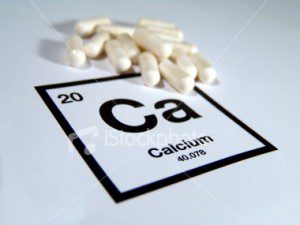Osteoporosis is not caused by a lack of limestone, oyster shell or bone meal. Heart attack, however, may be caused by supplementation with these exact same “elemental” forms of calcium, according to two meta-analyses published last year in the British Medical Journal.
Back in July of 2011, the British Medical Journal published the results of a high-powered meta-analysis which looked at whether or not calcium supplementation had any effect on cardiovascular disease risk. Indeed, this groundbreaking report, which was based on the results of five clinical trials conducted in the US, Britain and New Zealand, involving over 8,000 people, showed that taking elemental calcium supplements of 500 mg or more increased the relative risk of heart attack by 27%.
Though the study made international headlines at the time, critics soon took issue with the fact that it involved calcium supplementation without co-administered vitamin D. However, in April of that same year, another meta-analysis published in the same journal showed that even with co-administered D elemental calcium increased the risk of heart attack by 24%, and in addition, the composite of heart attack and stroke by 15% — in essence, putting those doubts to rest.
The idea that calcium supplementation may be toxic to cardiovascular health is not new, as many in the field of nutrition have long warned against supplementation with elemental calcium; which is to say, calcium from limestone, oyster shell, egg shell and bone meal (hydroxylapatite).
Despite the growing popularity of elemental calcium supplementation, largely reinforced by conventional health “experts” and organizations like the National Osteoporosis Foundation (whose corporate sponsors include the calcium manufacturers Oscal and Citrical), the habit simply does not make sense. After all, have you ever experienced visceral disgust after accidentally consuming eggshell? If you have, you know your body is “hard-wired” to reject low-quality calcium sources (stones and bones as it were), in favor of getting calcium from food.
Inorganic or “elemental” calcium, when not bound to the natural co-factors, e.g. amino acids, lipids and glyconutrients, found in “food” (which is to say other living beings, e.g. plants and animals), no longer has the intelligent delivery system that enables your body to utilize it in a biologically appropriate manner. Lacking this “delivery system,” the calcium may end up going to places you do not want (ectopic calcification), or go to places you do want (e.g. the bones), but in excessive amounts, stimulating unnaturally accelerated cell-division (osteoblasts), resulting in higher bone turn over rates later in life (this is explained in the article below).
Or, the body attempts to disburden itself of this inappropriate calcium and dumps it into the bowel (constipation), or pushes it through the kidneys (stones). Worse, high levels of calcium can accumulate in the blood (hypercalcemia), which can contribute to destabilizing the atherosclerotic plaque through the formation of a brittle calcium cap on the atheroma, can contribute to thrombosis (clot) formation, hypertension (that’s why we use calcium channel blockers to lower blood pressure), and perhaps causing arrhythmias/fibrillation and or heart muscle cramping (a rather common, though rarely recognized trigger of ‘heart attack’).
The breasts too are uniquely susceptible to calcification, which is why we use the same x-rays to ascertain bone density that we do to discern pathological microcalcifications in the breast, i.e. x-ray mammography. Due to the fact that the hydroxylapatitate crystals found in malignant breast tissue may act as a cellular ‘signaling molecule’ or mitogen (inducing cell proliferation), it is possible that certain breast calcifications may be a cause, and not just an effect, of the tumorous lesions (“breast cancer”) found there. This may also help to explain why women with the highest bone density (often obtained through massive, lifelong calcium supplementation) have up to 300% higher incidence of malignant breast cancer.
“Brain gravel” is also an increasingly prevalent phenomenon, where autoposied patients have been found to have pebble-size calcium deposits distributed throughout their brains, including the pineal gland (‘the seat of the soul’). The wide range of existing calcium-associateted pathologies, and their increasing prevalence in calcium-fixated cultures, demand further investigation and explanation. Could one aspect be our cultural fixation on mega-dose calcium supplementation?
To learn more, read “How Too Much Calcium & Over-Medication Can Break Your Bones”
About the Author
Sayer Ji is the founder of GreenMedInfo.com, the world’s largest, evidence-based, open-source, natural medicine database. Follow him on Facebook or Twitter

If you've ever found value in our articles, we'd greatly appreciate your support by purchasing Mindful Meditation Techniques for Kids - A Practical Guide for Adults to Empower Kids with the Gift of Inner Peace and Resilience for Life.
In the spirit of mindfulness, we encourage you to choose the paperback version. Delve into its pages away from screen glare and notifications, allowing yourself to fully immerse in the transformative practices within. The physical book enriches the learning process and serves as a tangible commitment to mindfulness, easily shared among family and friends.
Over the past few years, Wake Up World has faced significant online censorship, impacting our financial ability to stay online. Instead of soliciting donations, we're exploring win-win solutions with our readers to remain financially viable. Moving into book publishing, we hope to secure ongoing funds to continue our mission. With over 8,500 articles published in the past 13 years, we are committed to keeping our content free and accessible to everyone, without resorting to a paywall.







